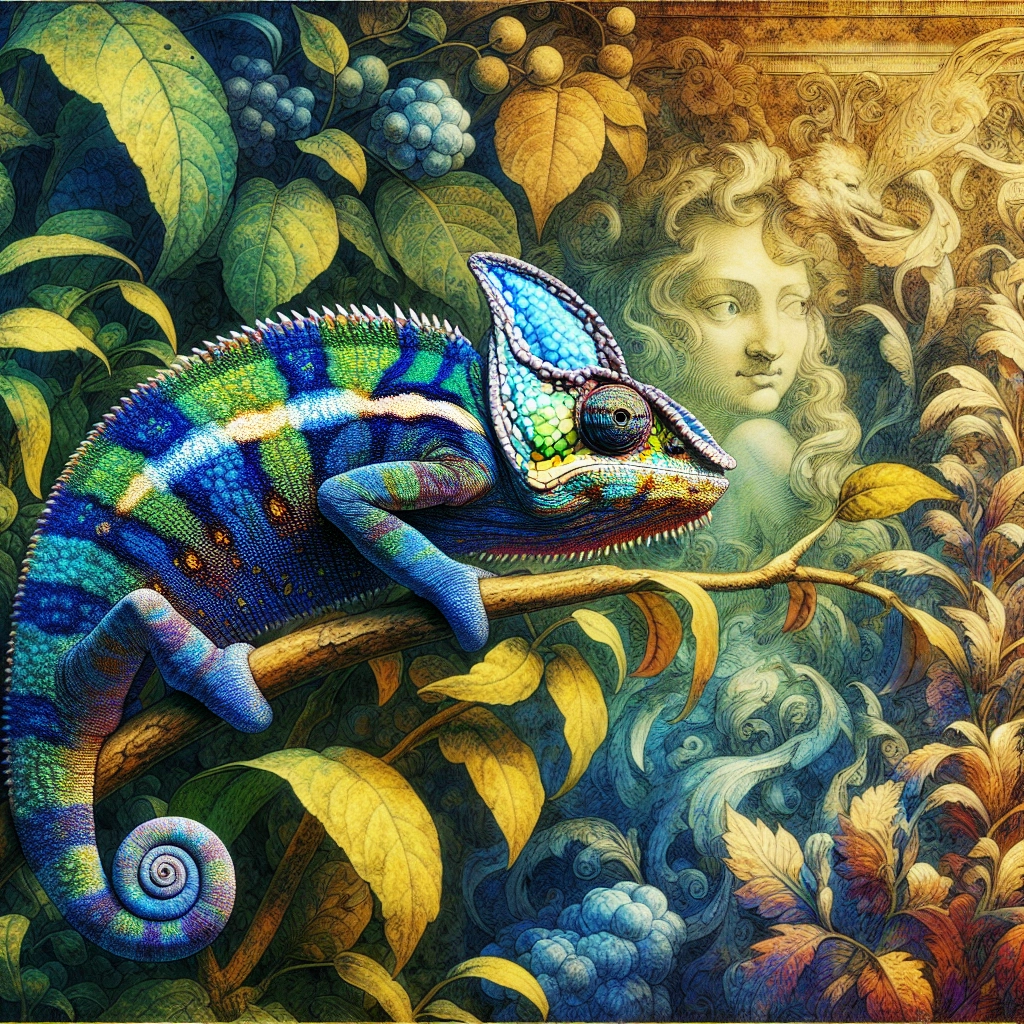
- Published on
- Authors

- Name
- ric de yuga 😄
🦎 Colorful Masters of Disguise: How Chameleons Change Color 🦎
Chameleons are among the most fascinating reptiles in the animal kingdom, renowned for their extraordinary ability to change color. This unique trait not only serves as an impressive display but also plays crucial roles in communication, camouflage, and temperature regulation. But how exactly do chameleons achieve such dramatic color changes? Let's explore the science behind their color-changing magic.
🔬 The Science of Color Change 🔬
The secret to a chameleon's color-changing ability lies in specialized cells in their skin called chromatophores and iridophores. These cells contain different pigments and reflect light in various ways, allowing chameleons to alter their appearance.
🌈 Chromatophores and Iridophores 🌈
Chromatophores:
- Red and Yellow Pigments: These pigments are found in chromatophores, which are located in the chameleon's upper skin layers.
- Expansion and Contraction: By expanding or contracting these cells, chameleons can change the intensity and presence of red and yellow hues in their skin.
Iridophores:
- Structural Colors: Iridophores are cells that contain microscopic crystals, which reflect light and create blue and green colors through a process known as structural coloration.
- Light Reflection: By adjusting the spacing of these crystals, chameleons can change the way light is reflected, resulting in different colors.
🦠 How Do Chameleons Control These Cells? 🦠
Chameleons control their color changes through a combination of hormonal and neural signals. These signals trigger the expansion or contraction of chromatophores and the rearrangement of iridophore crystals, allowing the chameleon to rapidly alter its skin color in response to environmental and physiological factors.
🌍 The Purposes of Color Change 🌍
Chameleons change color for several reasons, each serving an important role in their survival and social interactions.
🥷 Camouflage:
- Blending In: Chameleons use color change to blend into their surroundings, making it harder for predators to spot them and easier for them to ambush prey.
💬 Communication:
- Social Signals: Color changes can signal a chameleon's mood, health, or intentions to other chameleons. For example, bright colors might indicate aggression or readiness to mate, while darker colors can signal submission or stress.
🌡️ Temperature Regulation:
- Thermoregulation: By changing to darker colors, chameleons can absorb more heat from the sun, while lighter colors help them reflect sunlight and stay cool.
🌟 Nature's Palette 🌟
Chameleons are a testament to nature's ingenuity and adaptability. Their ability to change color is not just a visual spectacle but a sophisticated survival strategy honed by millions of years of evolution. Next time you see a chameleon, take a moment to appreciate the intricate biological mechanisms that allow these amazing reptiles to transform before your eyes.
In a world full of natural wonders, chameleons remind us of the beauty and complexity of life. Let's celebrate these colorful masters of disguise and the incredible science that makes their color-changing feats possible.
